Monastery of Santo Domingo de Silos

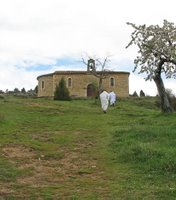 As I said yesterday, after visiting the birthplace of our holy father St Dominic, we crossed the hills to Silos and its ancient abbey in the stunning Tabladillo Valley. Monastic life began here in as early as the 7th century and Santo Domingo arrived c. 1000 and from 1041 he served as abbot until 1073. His wise and holy leadership initiated a golden age for the abbey and many of its great Romanesque features date to this period. The monastery remains a popular site for visitors especially since its recordings of Gregorian chant hit the charts in the early 1990s and caused a revival of interest in the sacred music of the Church!
As I said yesterday, after visiting the birthplace of our holy father St Dominic, we crossed the hills to Silos and its ancient abbey in the stunning Tabladillo Valley. Monastic life began here in as early as the 7th century and Santo Domingo arrived c. 1000 and from 1041 he served as abbot until 1073. His wise and holy leadership initiated a golden age for the abbey and many of its great Romanesque features date to this period. The monastery remains a popular site for visitors especially since its recordings of Gregorian chant hit the charts in the early 1990s and caused a revival of interest in the sacred music of the Church!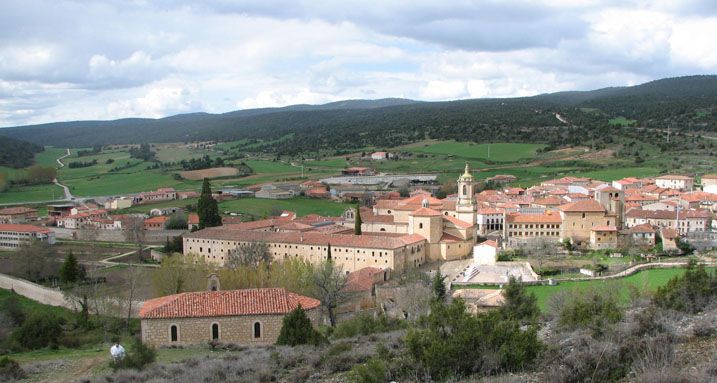
The story is told that while Blessed Jane of Aza was carrying St. Dominic she had a dream in which she bore in her womb a dog who broke away from her and ran through the world setting it on fire with a torch he carried in his mouth. She was troubled by this dream and went to pray at this Benedictine abbey in Silos (above) which lies just 20 miles north of Caleruega. The answer was, of course, that her son would set the world on fire by his preaching, and the dog with the torch remains a symbol of the Friars Preachers (depicted on the right in stained glass from the friars' chapel in Caleruega).
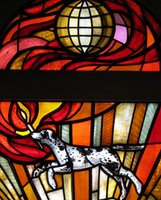 Relations between the Benedictine monastery and the Dominicans at Caleruega remain warm. From 1835 - 1880 when the civil government dissolved the monasteries, the monks took refuge in Caleruega.
Relations between the Benedictine monastery and the Dominicans at Caleruega remain warm. From 1835 - 1880 when the civil government dissolved the monasteries, the monks took refuge in Caleruega.The monastery is not just famous for its chant but also its Romanesque architecture which is often featured in books representative of the style. The centrepiece of this monastic complex is the cloister initiated by Santo Domingo and he is actually buried in the cloister. Every capital is beautifully and individually carved, as are the columns, in this cloister and in every corner are two wonderful reliefs of scenes from the New Testament. Below are photos of this cloister:
A beautiful cloister is a haven for contemplation and a vision of Paradise... How I wish we had one in our convent!
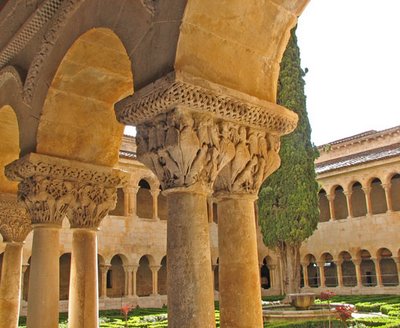
The Romanesque capitals shown above are clearly a stone-mason's masterpiece!

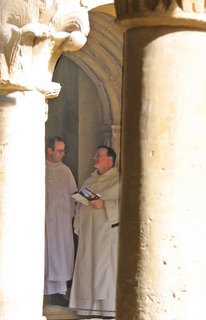
On the left is a relief of the Entombment and Resurrection of Christ and on the right is one of my favourite photos from the entire pilgrimage, taken (unbeknownst to them) from across the cloister, of Br Paul with Fr John Patrick Kenrick OP our novice master.
Having refreshed ourselves in a local tavern, we stayed for Vespers which was prayed in the monastery church,
 packed mainly with curious tourists on a day trip from Burgos. Photos were verboten, hence the lack. However you can see it behind us in the photo on the left. The beautiful Gregorian chant antiphons for the Octave of Easter and the entire Office were sung exquisitely in the famed Solesmes way and it briefly stirred anew my interest in the Benedictine life and longing for the tranquility of the cloister! But of course it has been said that in every religious and indeed in every priest lies a longing for the monastic life...
packed mainly with curious tourists on a day trip from Burgos. Photos were verboten, hence the lack. However you can see it behind us in the photo on the left. The beautiful Gregorian chant antiphons for the Octave of Easter and the entire Office were sung exquisitely in the famed Solesmes way and it briefly stirred anew my interest in the Benedictine life and longing for the tranquility of the cloister! But of course it has been said that in every religious and indeed in every priest lies a longing for the monastic life...This completed our trip to Caleruega - it took us a whole day to get there and back and to visit Silos as well.
 It was certainly very special for me to see these places so closely associated with our holy father St Dominic... and of course every step I felt Our Lady was with us (see photo to the right):
It was certainly very special for me to see these places so closely associated with our holy father St Dominic... and of course every step I felt Our Lady was with us (see photo to the right):On the way back to Salamanca from Silos, we went through the little village of Penafiel which is dominated by its stunning castle (below), perched on its rock like something conjured by Disney, only better and very real! Like the much smaller torreon in Caleruega, such structures give the region of Castille its name and played an important role in the re-conquest of Spain from Moorish dominion.
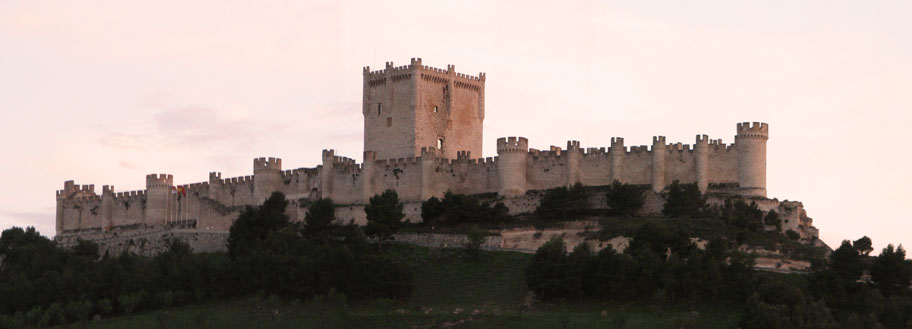
Still to come: The Dominican nuns' monastery in Salamanca and other views of the city; Avila and the Dominican convent built by the Torquemada; sites associated with St Teresa of Avila; the Dominican Shrine of Our Lady of La Peña de Francia.

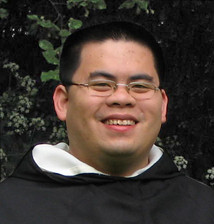

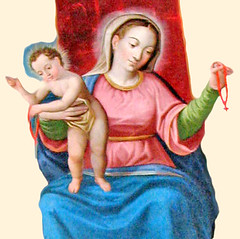

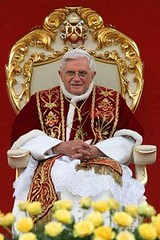


2 Comments:
Bro. Lawrence OP
the photos as inspiring. I can't wait till you show us AVILA.
wILL YOU CROSS sPAIN AND GO TO fRANCE (NEXT YEAR). AS THEYSAY, THERE (fRANCE) THE STORY OF dOMINIC CONTINUES...
tHANKS AGAIN.
fR.tERRYop
Perhaps one day I shall make a visit to Toulouse, Prouille etc... please God. I'm glad you like the photos.
In Avila at Sto Tomas, we met some friars who knew you when you were a student brother at UST!
Post a Comment
<< Home